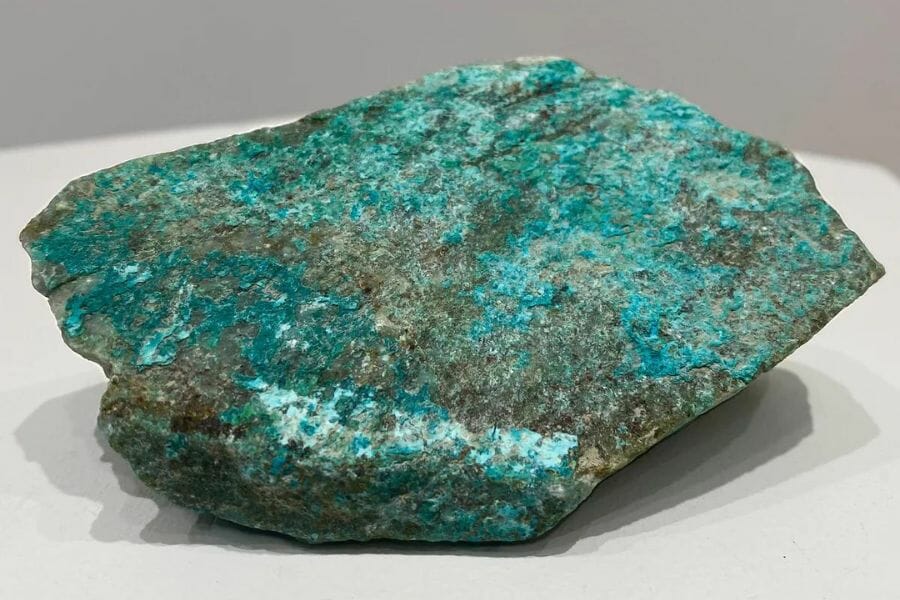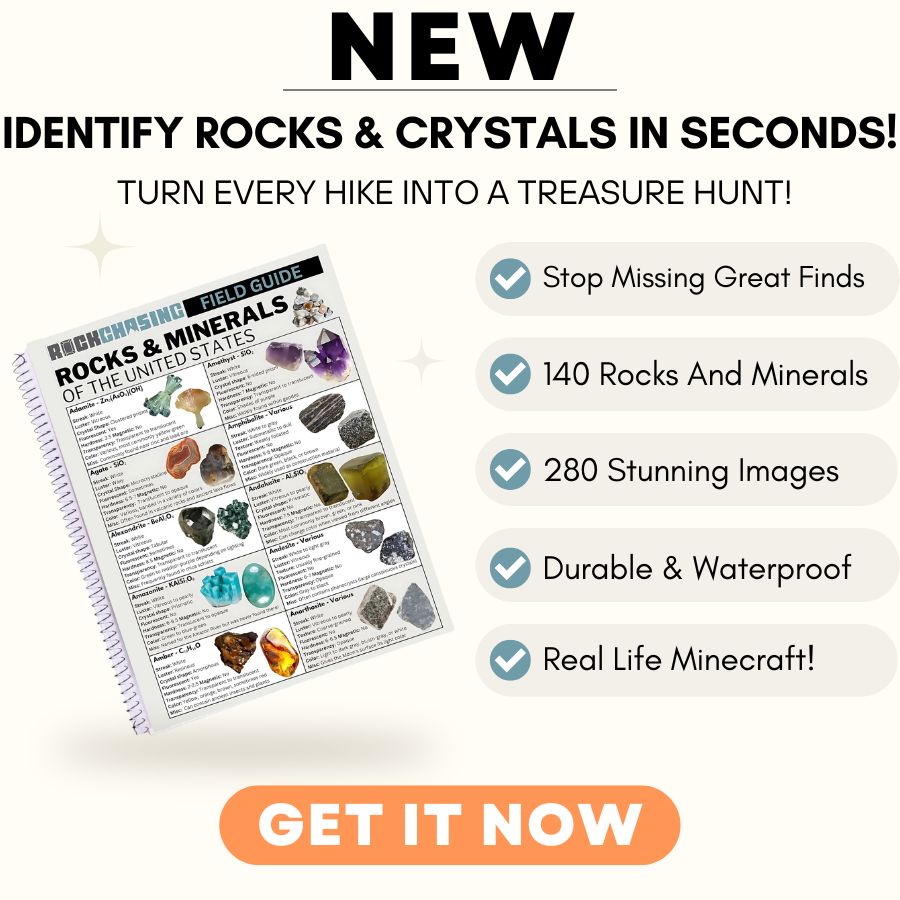Finding crystals can be a rewarding adventure, offering a unique way to explore the natural beauty and geology of the region. Whether you’re a seasoned rockhound or just getting started, knowing where to look is key to uncovering these hidden treasures.
In this state, a variety of locations provide opportunities to discover different types of crystals. From rocky outcrops in the mountains to stream beds that carry sparkling surprises, each area offers its own unique finds for those willing to search.
We can help you get started with some places you can explore for crystals below!
Crystals you can find in the US
The United States offers a wide range of crystals that reflect its diverse geology. From vibrant gems to more subtle mineral formations, there’s something to discover in nearly every region.
Calcite
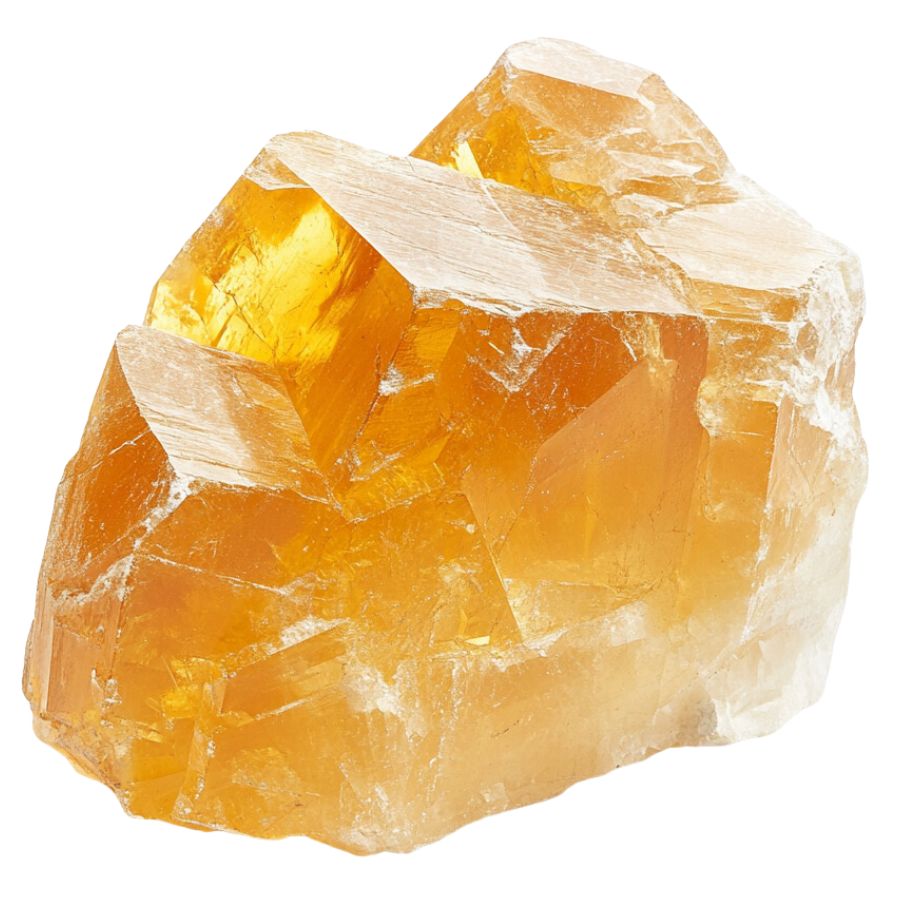
With a variety of forms and a unique property of double refraction, calcite allows objects viewed through the crystal to appear doubled. This mineral can appear in a spectrum of colors, with pure forms typically being transparent or white.
In addition, calcite reacts vigorously with acids, which aids in distinguishing it from other minerals. It also frequently contributes to the structure of sedimentary rocks such as limestone.
Gypsum
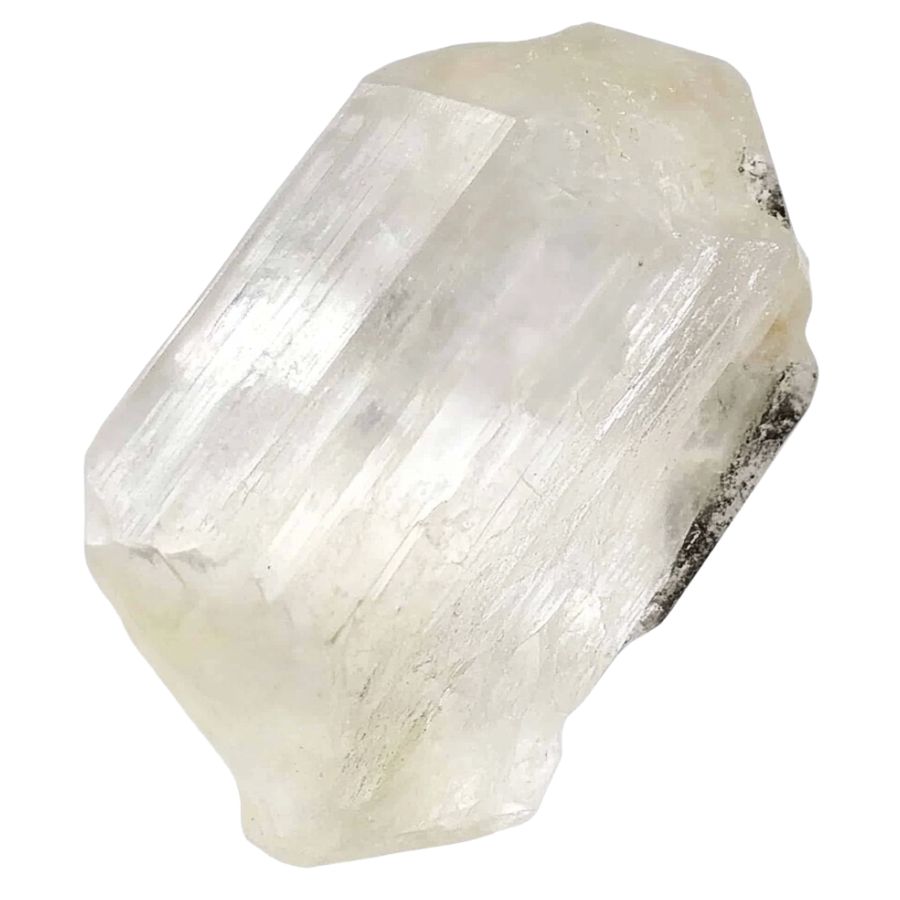
Gypsum’s notable softness allows it to be easily scratched with just a fingernail, often presenting as white or very light-colored in its pure form.
It manifests in both crystalline forms, like selenite, and massive forms such as alabaster, making it versatile in use and appearance.
Gypsum is also essential in the construction industry and is a key component in the manufacture of plaster and drywall.
Fluorite
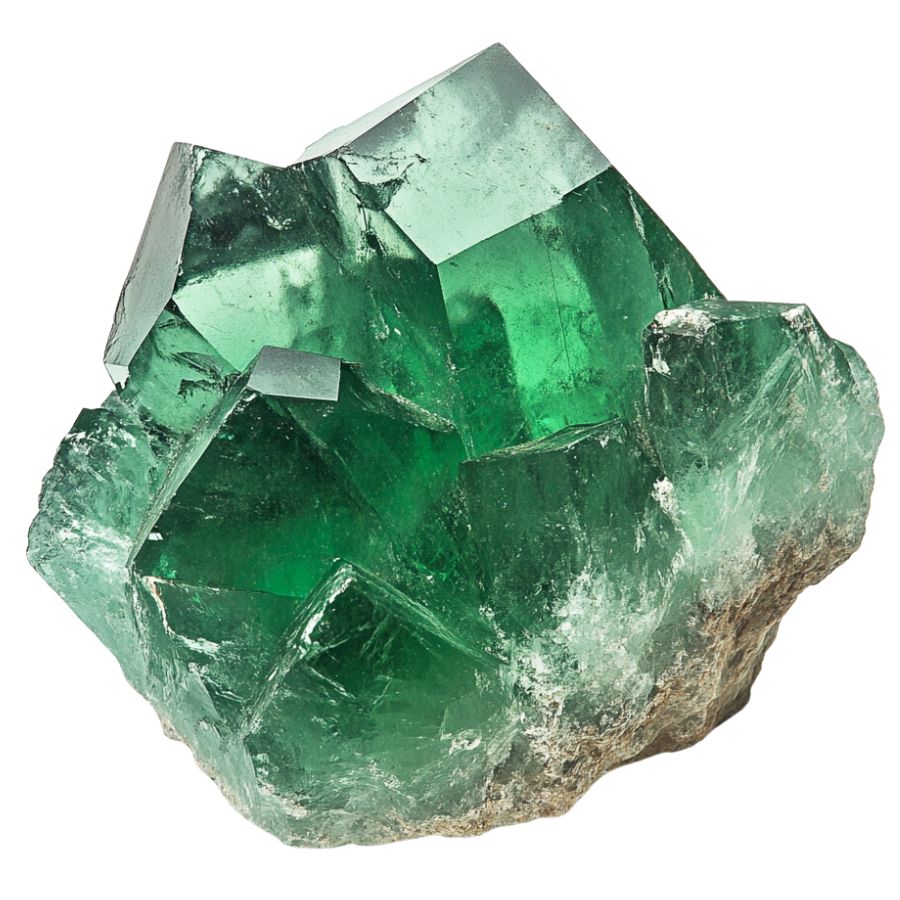
Fluorite comes in a wide range of vibrant colors, including purples, greens, blues, and yellows, and is known for forming in well-defined cubic crystals.
Beyond this, fluorite exhibits fluorescence under ultraviolet light! It can also be used in various industrial applications, including as a flux in steelmaking.
Galena
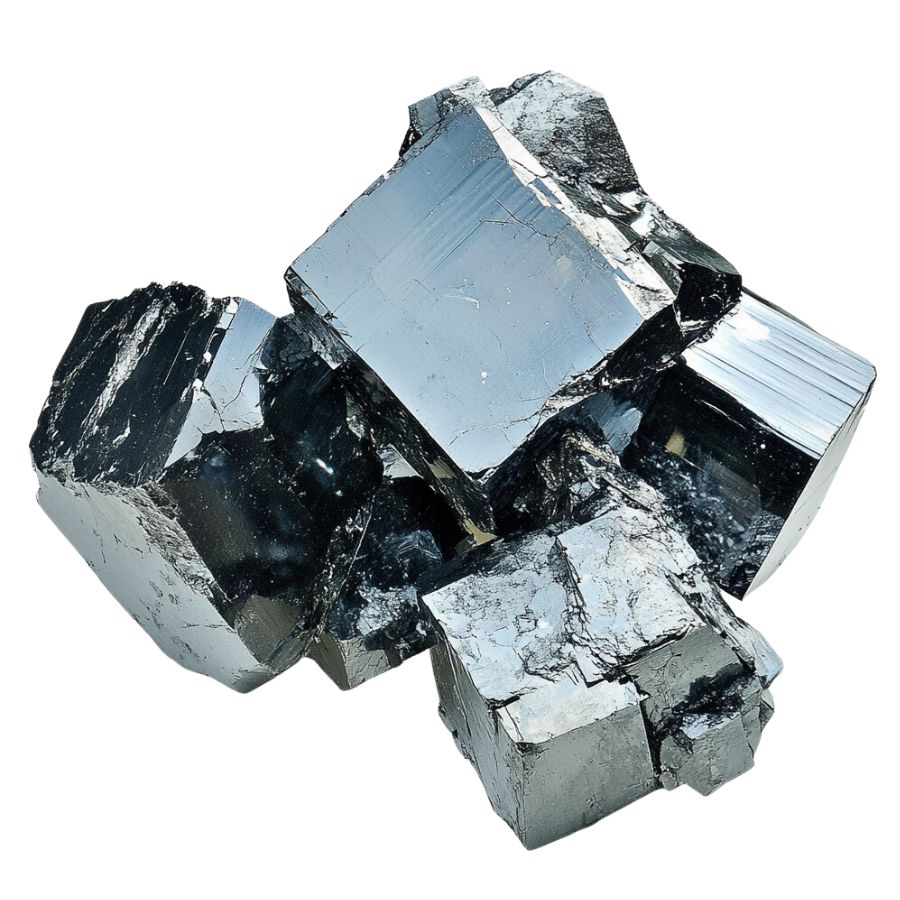
Galena distinguishes itself with a metallic luster and high density, typically found in a cube-like form. It serves as the primary ore of lead, making it important in the metal industry, while its shiny, silver color attracts collectors.
Not only does its appearance make it a subject of interest, but its weight and texture provide tangible lessons in mineral density and metallic properties. Galena also often contains traces of silver, adding to its commercial and educational value.
Corundum
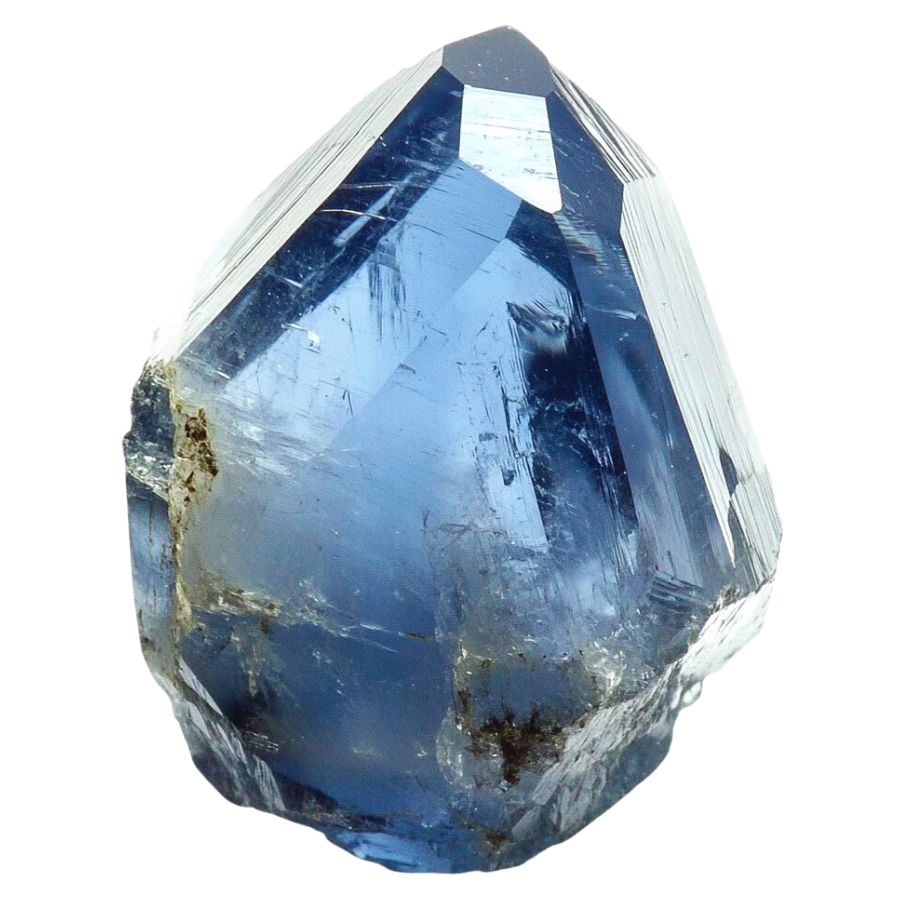
Corundum is a mineral that comes in a variety of colors, though it is typically transparent or gray. Its most famous forms are sapphires and rubies, which are prized for their vibrant blue and red hues.
The mineral is known for its remarkable hardness, ranking just below diamond on the Mohs scale. This durability makes corundum ideal for industrial abrasives and cutting tools, as well as a popular choice for fine jewelry.
Quartz
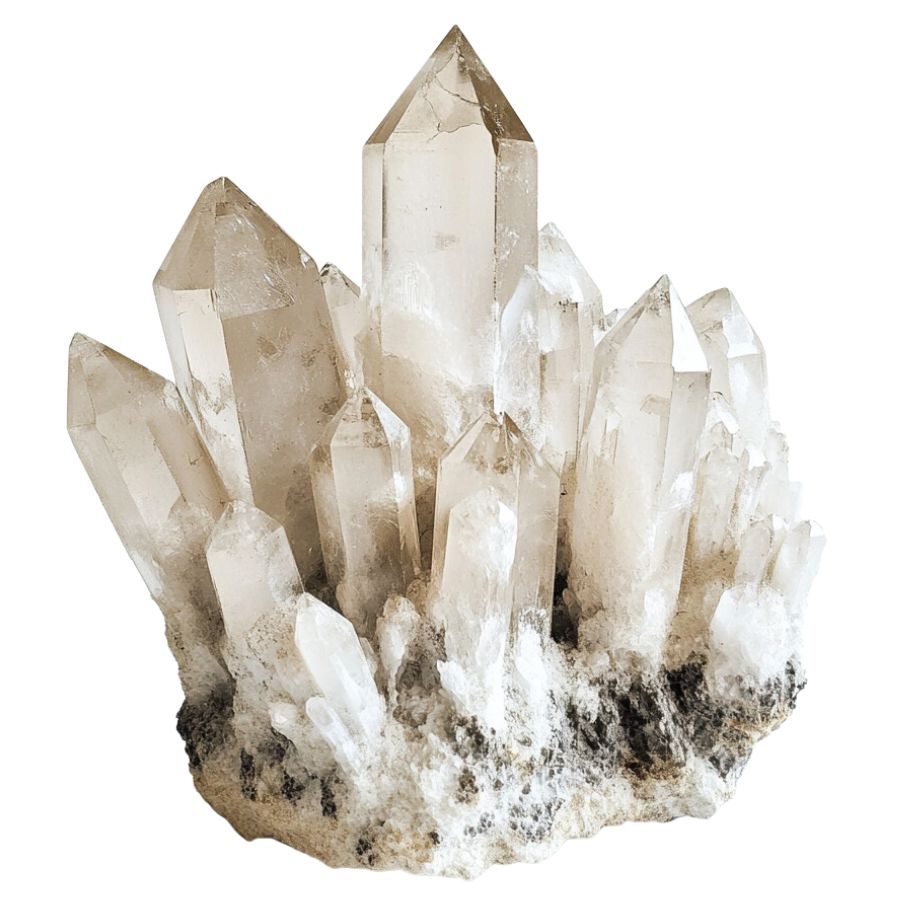
Quartz is among the most common minerals in the Earth’s crust and is prized for its durability and variety. It forms in a wide range of colors and types, from clear rock crystal to purple amethyst.
The mineral is notable for its hardness and durability, which contribute to its use in a variety of applications. Quartz is also popular in the manufacturing of electronics and watches due to its piezoelectric properties, which allow it to convert mechanical pressure into electrical energy.
Pyrite
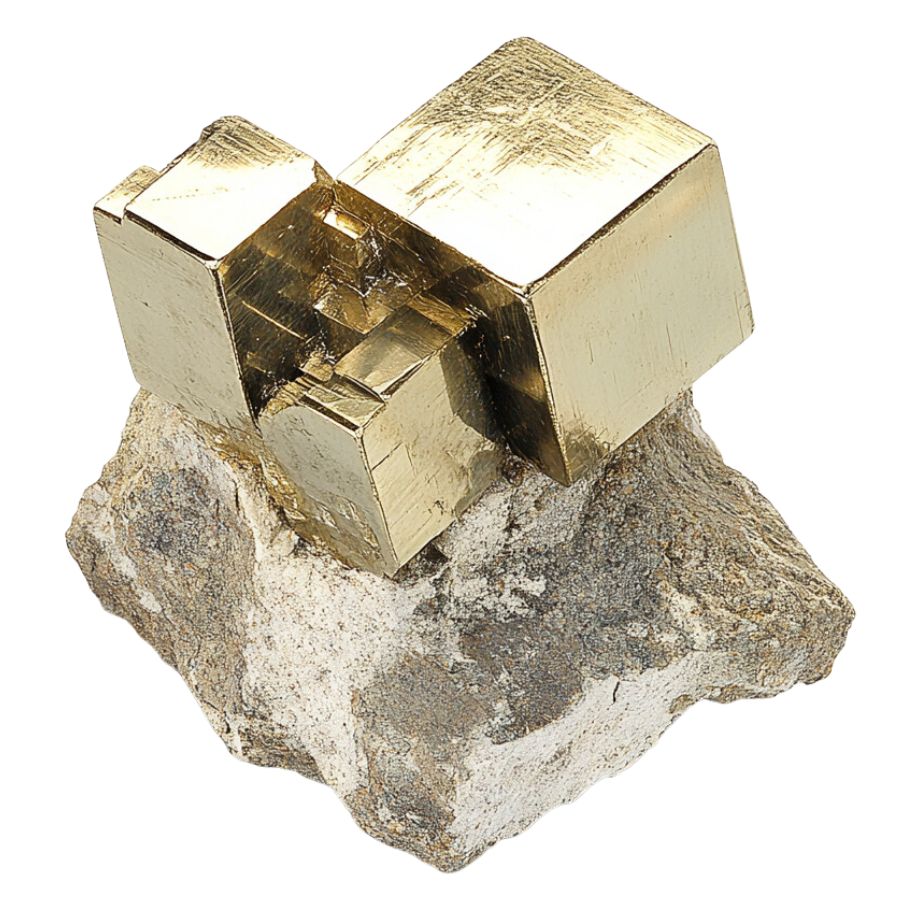
Often mistaken for gold due to its metallic luster and pale brass-yellow hue, pyrite is known colloquially as “fool’s gold.” Its characteristic cube-shaped crystal formations look man-made but are actually completely naturally formed!
Pyrite also has historical importance in producing sulfur dioxide for sulfuric acid production.
Rhodochrosite
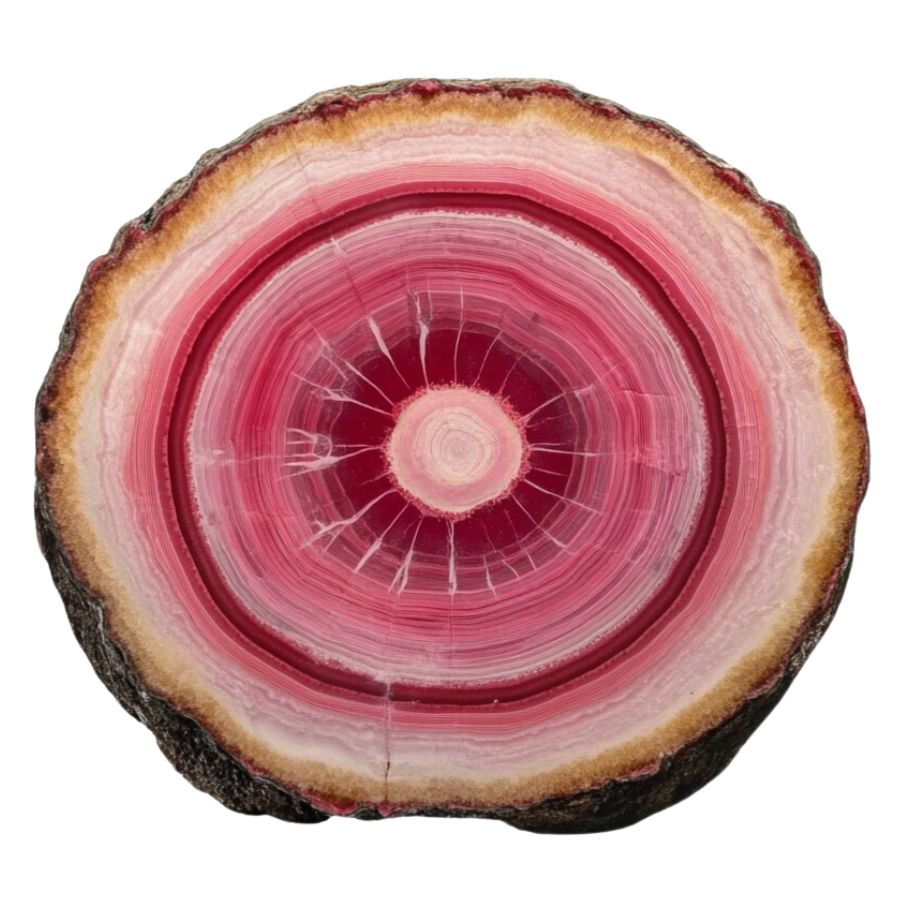
Rhodochrosite stands out with its rich pink and red hues, making it highly desirable as both a mineral specimen and a gemstone.
It typically forms in layered or stalactitic structures, with bands of colors that showcase how it grew over millions of years.
Beyond its beauty, rhodochrosite is significant as the main source of manganese, an essential element used in metal alloys.
Rhodonite
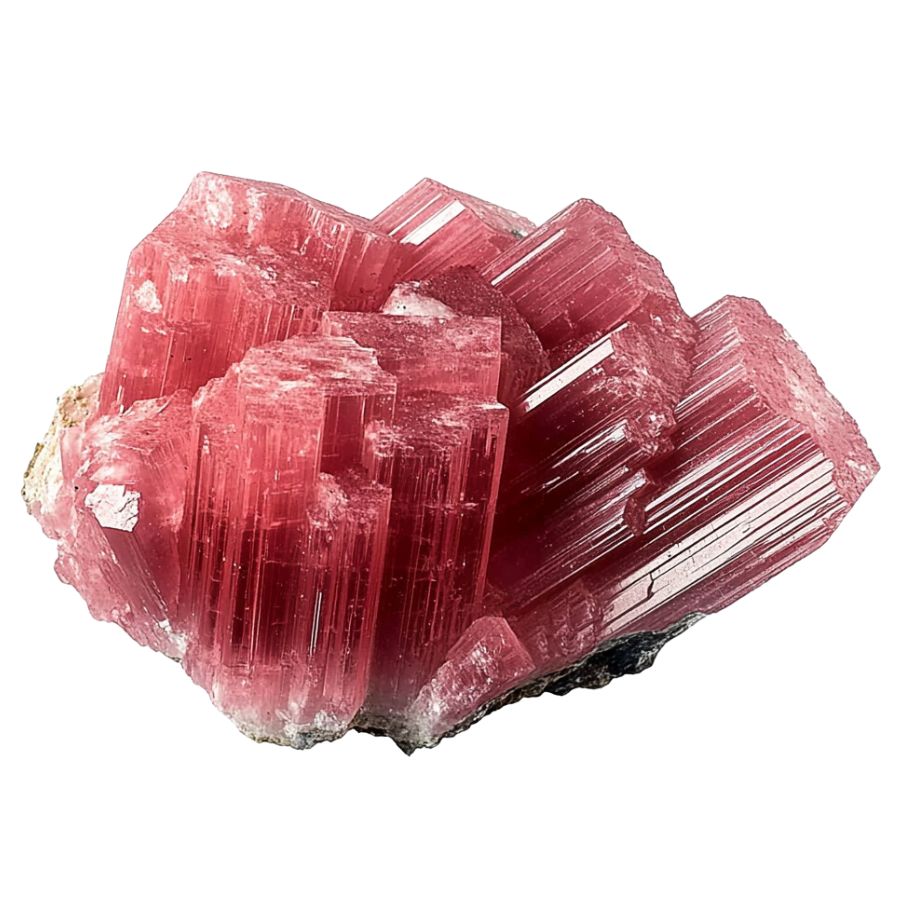
Appreciated for its deep pinks and reds, often complemented by black manganese oxide veins, rhodonite presents a dramatic appearance. It is typically found in metamorphic rocks and is used both as an ornamental stone and in jewelry.
In geology, rhodonite is significant for its role in metamorphic processes and its association with other manganese-rich minerals. It can be found in metamorphosed sedimentary rocks and is sometimes used as an indicator of the presence of manganese deposits.
Vivianite
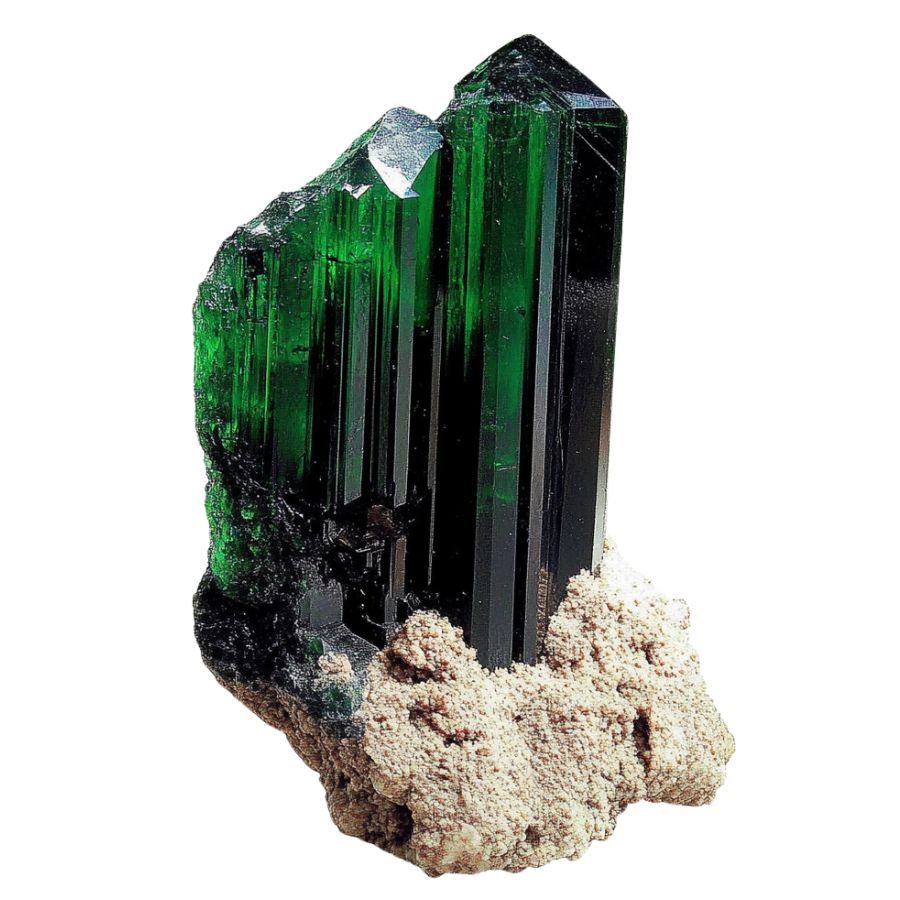
Vivianite, an iron phosphate mineral, emerges in low-oxygen environments like peat bogs or iron-rich deposits. Its striking blue to green color, which can change to a lighter shade over time due to oxidation, makes it a distinctive mineral.
Found in various geological settings, vivianite provides clues about the local conditions and the presence of phosphate deposits.
The Types of Virginia Crystals You Can Find
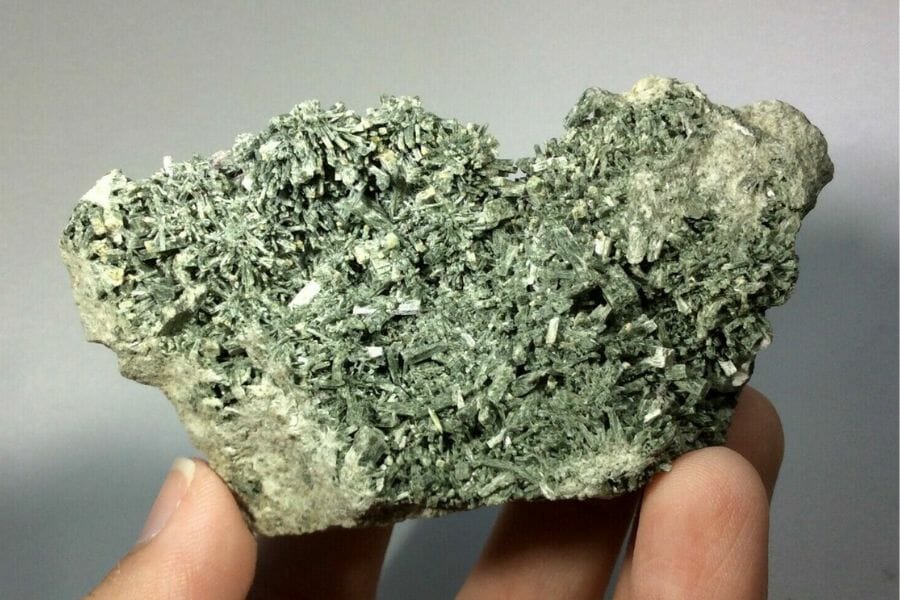
Virginia is a hot spot for crystal hunters, as the state is home to an array of crystal deposits waiting to be discovered. Whether you’re looking for something shiny and smooth or jagged and rough, you’re bound to find what you’re searching for! With some luck and perseverance, you might even uncover a rare crystal that will make all your friends green with envy.
Rare crystals found in Virginia
- Agate
- Chrysocolla
- Jasper
- Malachite
- Muscovite
- Serpentine
- Smoky Quartz
- Tremolite
- Unakite
More common crystals found here
- Amazonite
- Amethyst
- Apatite
- Azurite
- Beryl
- Calcite
- Chalcopyrite
- Epidote
- Fluorite
- Galena
- Garnet
- Hematite
- Kyanite
- Moonstone
- Pyrite
- Quartz
- Topaz
- Tourmaline
What rough crystals look like
When you’re out looking for crystals on your own it’s important to know what you’re looking for. This is what you need to look out for:
Look for exteriors like this
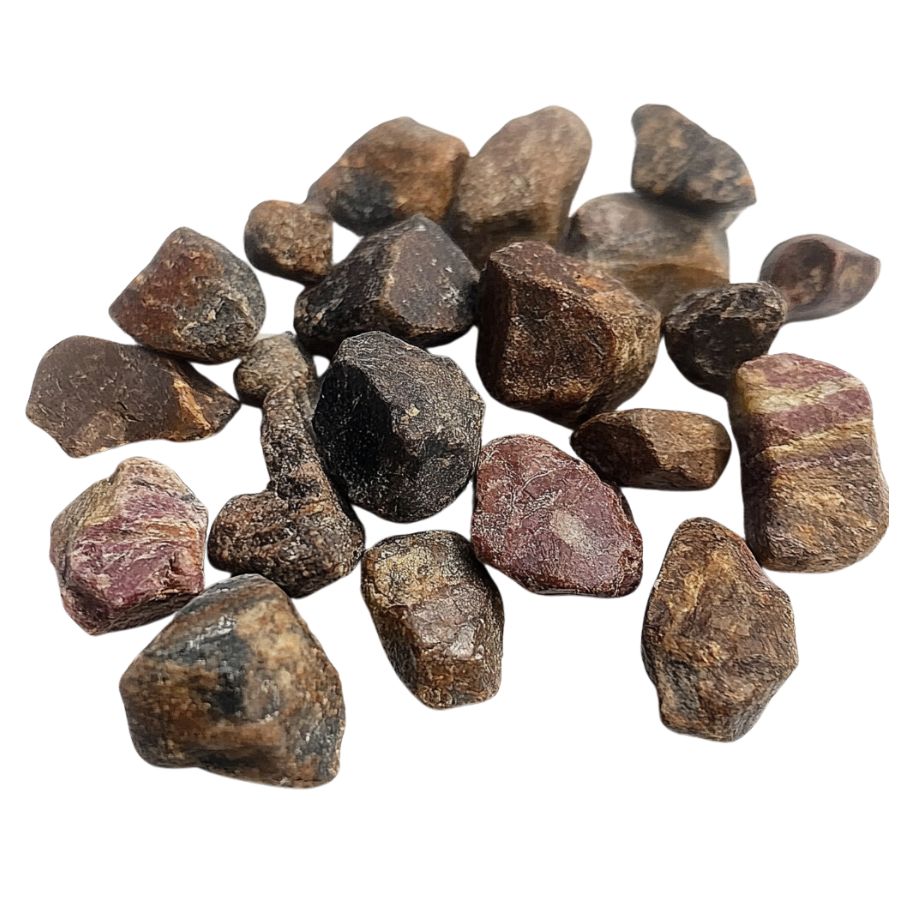
When you’re out searching for crystals in the wild, it’s essential to keep in mind that what you find won’t look like the polished stones you see in stores. One important tip is to consider what certain crystals look like in their raw, natural form.
Without the shine and smooth finish, crystals might appear rough, with jagged edges or earthy tones masking their true beauty. Understanding this can help you spot potential finds that might otherwise be overlooked.
Examine the crystal structure and shape
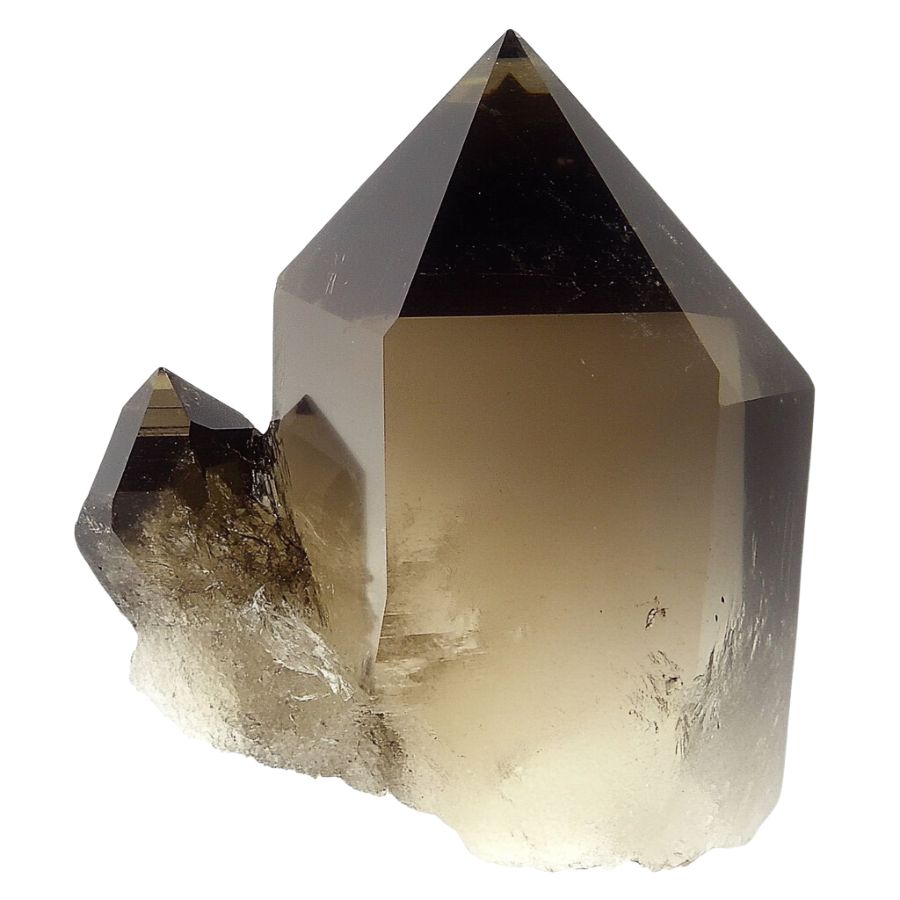
Crystals often form in specific geometric patterns that can be key to identifying them. For example, quartz is known for its hexagonal prisms, while halite typically forms cubic shapes.
By recognizing these distinct patterns, you can differentiate between various types of crystals and better understand what you’ve found.
Observe color
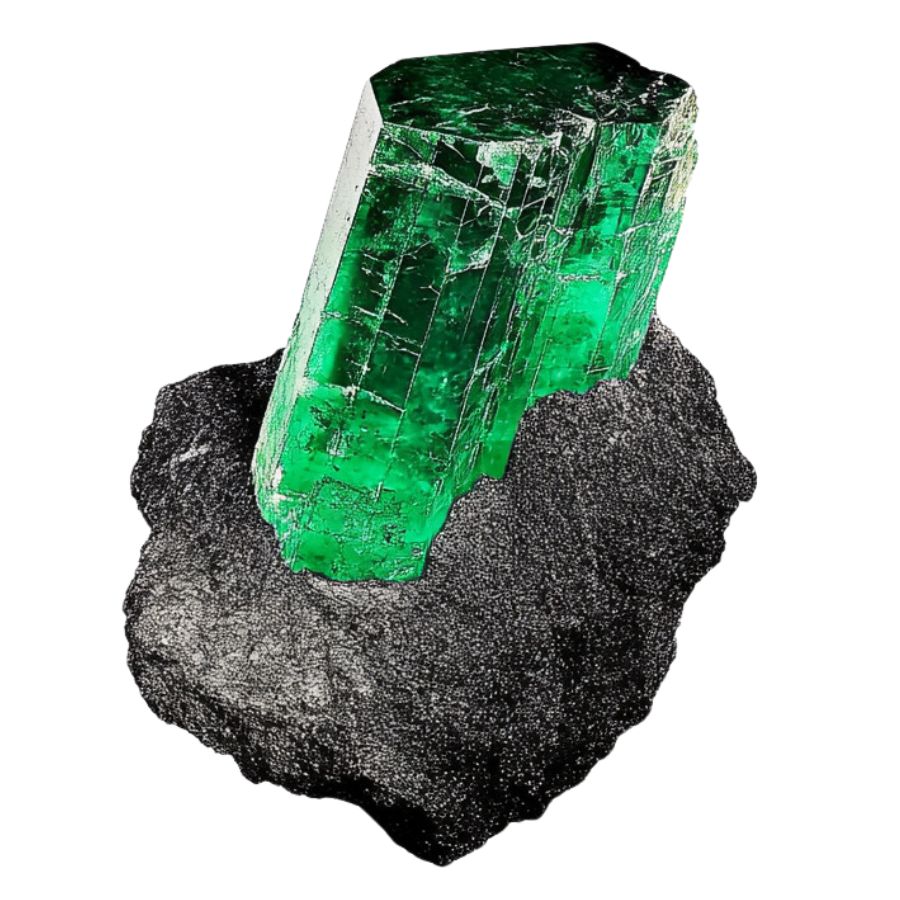
Some crystals are known for their distinct hues, like the deep purple of amethyst or the vibrant green of emerald. However, not all crystals will have strong colors; some may be clear or only slightly tinted.
Check the luster
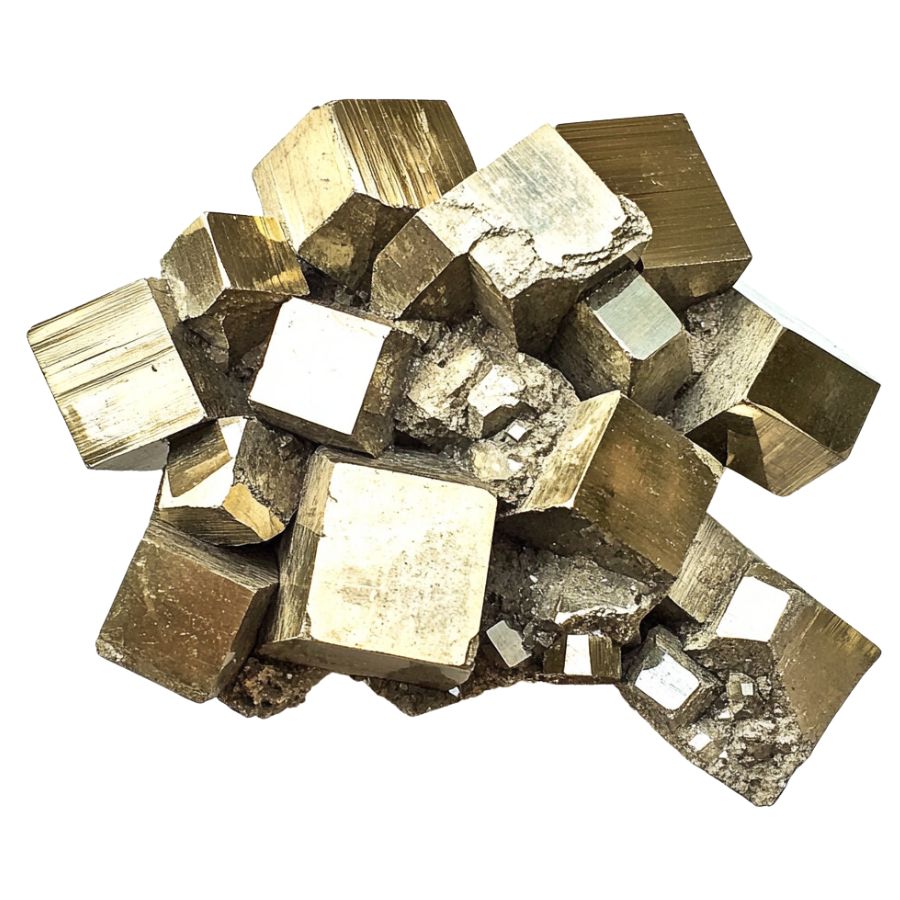
Luster refers to how a crystal’s surface interacts with light. Some crystals might have a shiny, glassy luster, while others may appear metallic or dull. This characteristic can help you determine the type of crystal you’ve found.
However, it’s important to remember that luster isn’t always obvious right away. In some cases, a crystal’s true luster will only become apparent after it’s been cleaned or polished, so keep this in mind as you examine your finds.
Evaluate the transparency
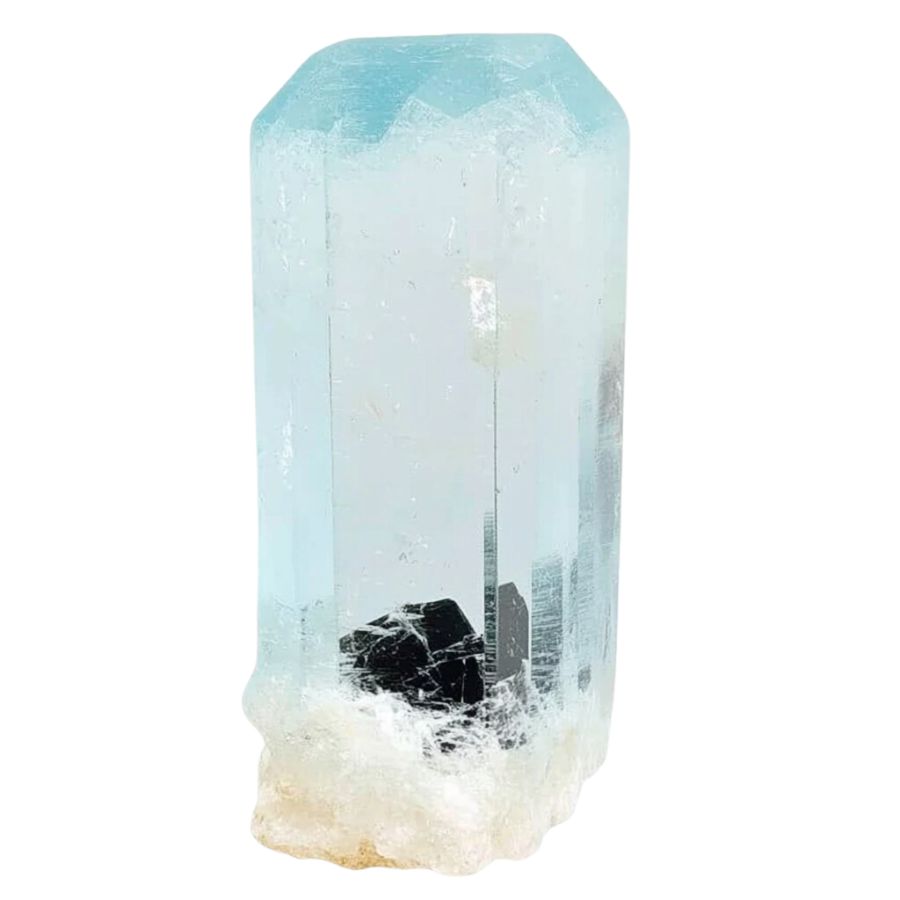
Pay close attention to how much light passes through the crystal. Some crystals are completely clear, allowing light to pass through easily, while others may be opaque and block light entirely.
You might also encounter crystals with translucent edges but opaque centers. These variations in transparency can offer valuable clues about the type of crystal you’ve found, making it easier to identify and appreciate your discovery.
A Quick Request About Collecting
Always Confirm Access and Collection Rules!
Before heading out to any of the locations on our list you need to confirm access requirements and collection rules for both public and private locations directly with the location. We haven’t personally verified every location and the access requirements and collection rules often change without notice.
Many of the locations we mention will not allow collecting but are still great places for those who love to find beautiful rocks and minerals in the wild without keeping them. We also can’t guarantee you will find anything in these locations since they are constantly changing.
Always get updated information directly from the source ahead of time to ensure responsible rockhounding. If you want even more current options it’s always a good idea to contact local rock and mineral clubs and groups
Tips on where to look
Having a better idea of where to look can greatly narrow down your search and increase your chances of finding crystals. By focusing on environments where crystals are likely to be exposed, you can spend less time searching and more time discovering.
Outcrops and Exposed Rock
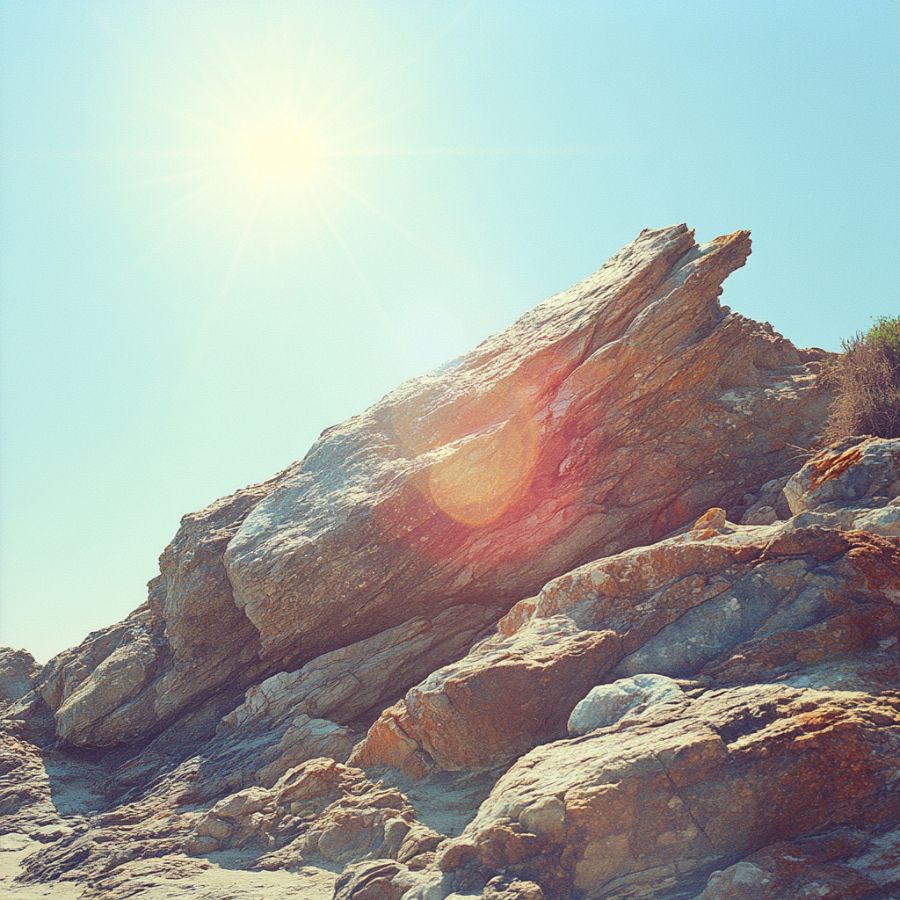
Rocky outcrops are prime locations for finding crystals and minerals. Search along the edges of outcrops, particularly where erosion has worn away the surrounding soil, revealing the rock underneath.
Pay close attention to any visible cracks, crevices, or small cavities within the outcrop, as these are often where crystals develop and can be extracted with minimal effort.
Stream Beds and Gravel Deposits
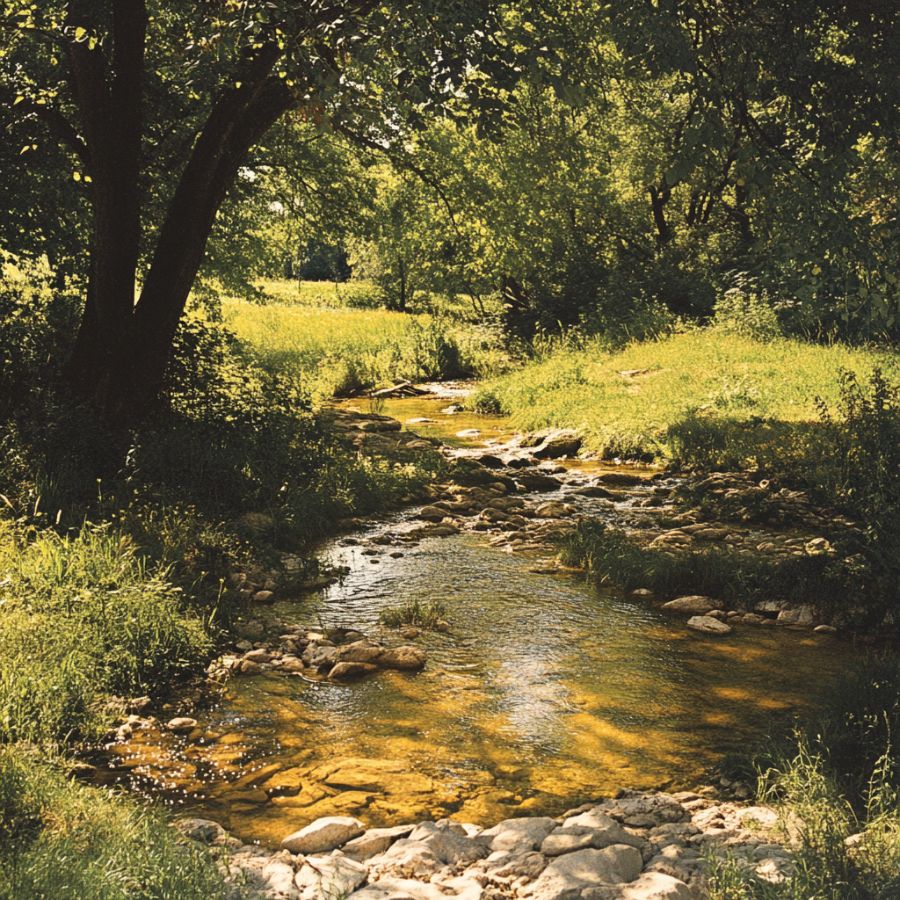
Stream beds are dynamic environments where water flow constantly shapes the landscape. Over time, water can erode rocks upstream, breaking them down and carrying mineral fragments, including crystals, downstream.
When searching in these areas, look for spots where the current has slowed, such as bends in the stream or areas behind large rocks, as these are prime locations for deposits.
Quarries and Mines
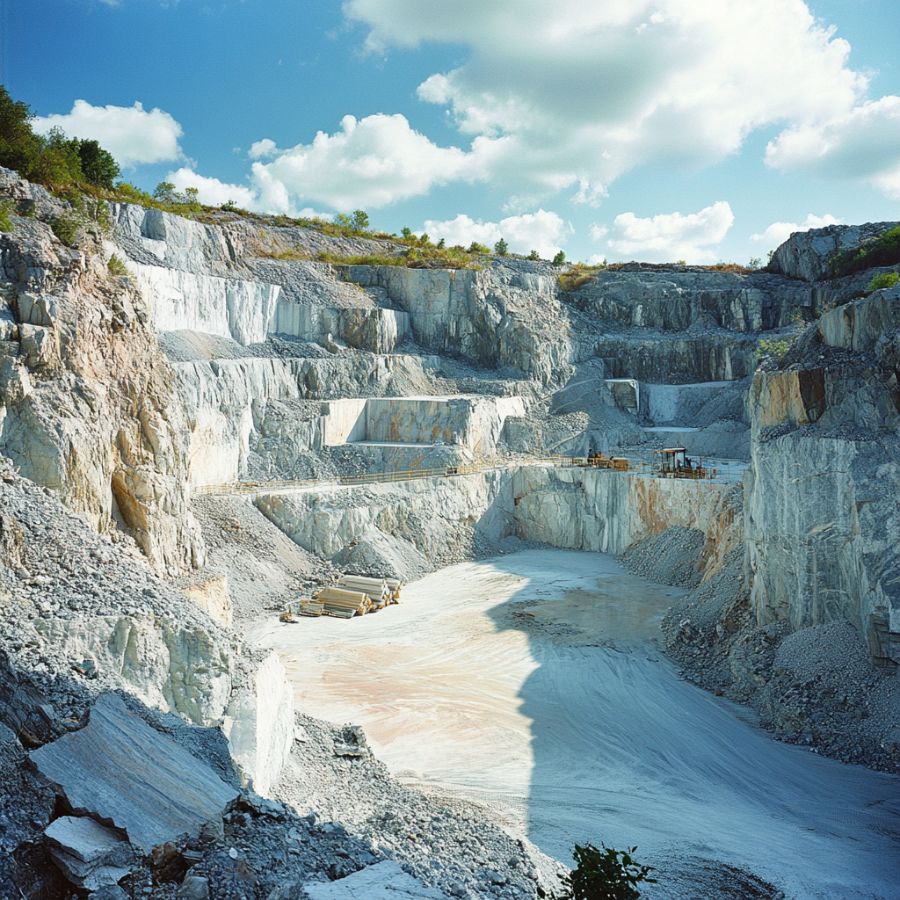
Quarries and mines are excellent places to search for crystals because they expose deep layers of rock that would otherwise be hidden beneath the surface. These sites often contain a variety of minerals and crystals that have been brought to the surface during excavation.
Pay attention to tailings piles, where waste rock is discarded, as they often contain overlooked or broken crystals. Always prioritize safety when exploring these areas and ensure that you have permission to search.
Road Cuts and Construction Sites
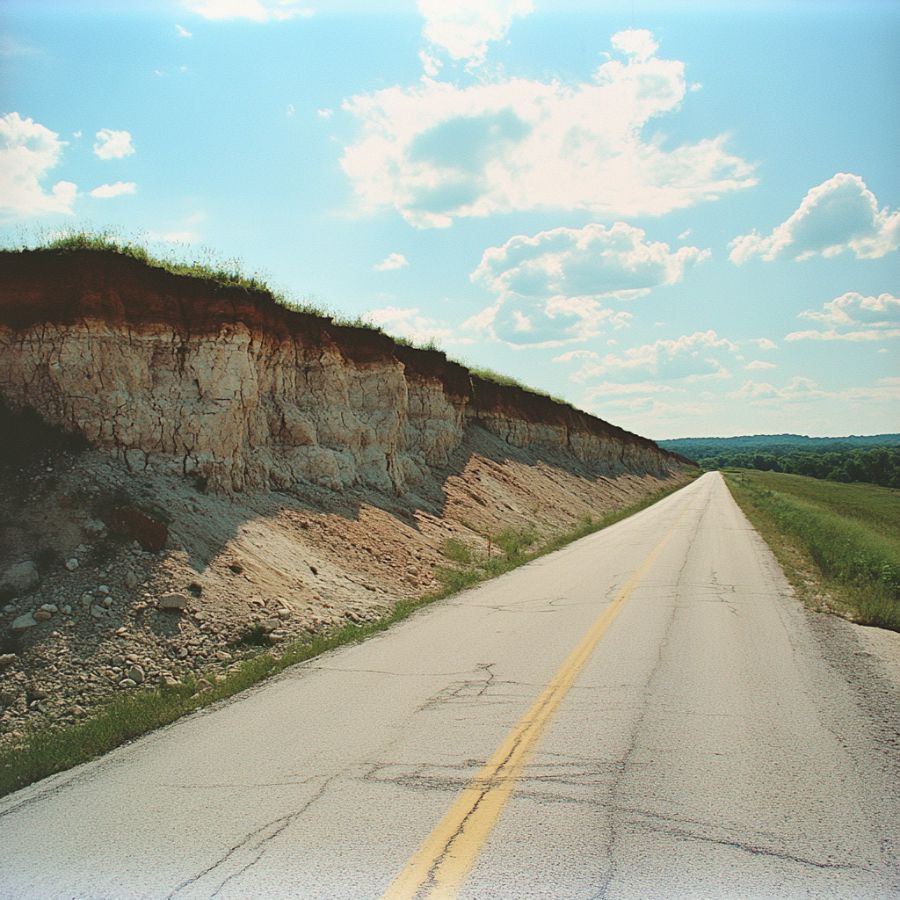
As roads are cut through hillsides or construction projects dig deep foundations, layers of rock and soil that have been undisturbed for millions of years are suddenly exposed.
Look for freshly exposed rock faces, especially where blasting has occurred, as this can create fissures or expose pockets filled with crystals. Be cautious around active construction sites, and always seek permission before exploring.
Mountainous Areas
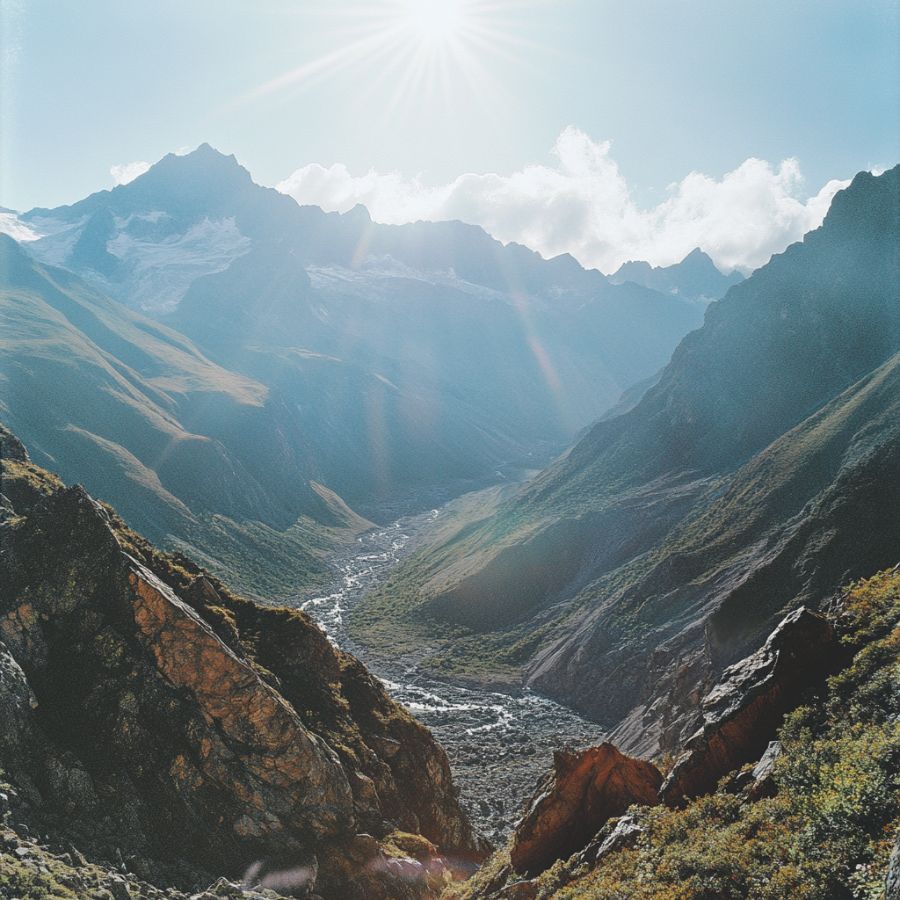
In mountainous regions, erosion caused by wind, rain, and ice can wear away the softer rock, exposing harder crystals that have formed within. Focus on weathered and broken rock formations.
Look for scree slopes, where loose rock has accumulated at the base of cliffs. Additionally, areas near fault lines or volcanic vents are particularly promising, as they often have a higher concentration of minerals.
DON'T MISS OUT ON ANY GREAT FINDS!
While you're out searching for Crystals you're going to find A LOT of other interesting rocks and minerals along the way. The last thing you want to do is toss out something really interesting or valuable. It can be easy to misidentify things without a little guidance.
We've put together a fantastic field guide that makes identifying 140 of the most interesting and valuable rocks and minerals you will find REALLY EASY. It's simple to use, really durable, and will allow you to identify just about any rock and mineral you come across. Make sure you bring it along on your hunt!
Virginia Crystal Mining Laws And Regulations
Virginia has a number of regulations in place when it comes to recreational crystal mining. These regulations are designed to protect both the environment and the safety of those who are searching for crystals.
A permit is required for all recreational mineral collecting. This permit can be obtained through the Virginia Department of Mines, Minerals and Energy.
Certain areas in Virginia may be off-limits to recreational crystal mining. For example, some state parks and wildlife management areas prohibit mineral collecting.
Recreational crystal mining is only allowed in areas where it will not damage the environment or wildlife. It’s important to avoid disrupting natural habitats or damaging streams or other water sources.
- The extensive local experience and understanding of our team
- Input from multiple local crystal hunters and crystal collecting groups
- The accessibility of the crystal mining locations
- Safety and potential hazards when collecting
- Private and public locations
- A desire to include locations for both experienced crystal hunters and those who are just starting out
Using these weights we think we’ve put together the best list out there for those who love finding new crystals for our collections!
The Best Locations For Crystal Mining in Virginia
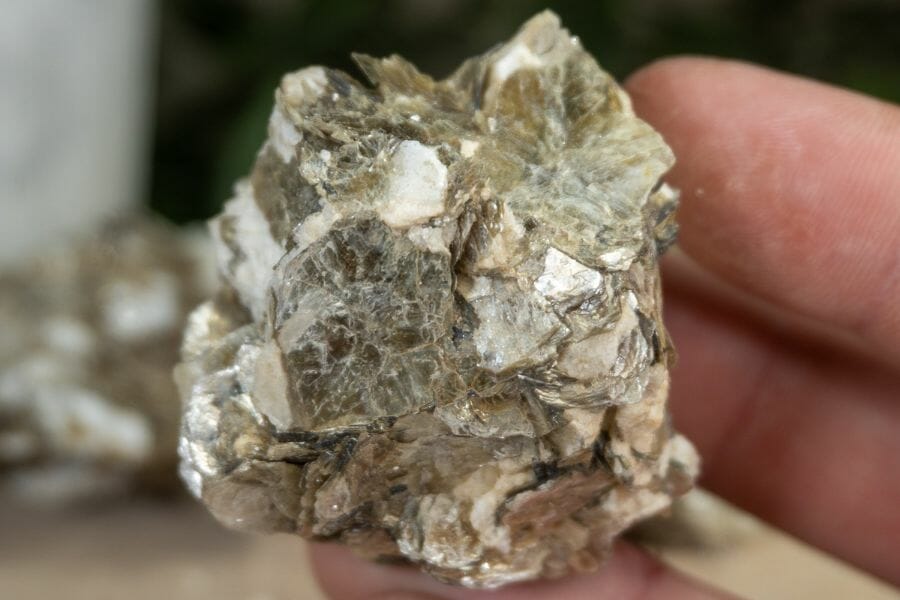
We’ve selected our top 5 suggestions from among the many incredible locations in Virginia where you can find crystals, and we’re positive you’ll love exploring them!
Always Confirm Access and Collection Rules!
Before heading out to any of the locations on our list you need to confirm access requirements and collection rules for both public and private locations directly with the location. We haven’t personally verified every location and the access requirements and collection rules often change without notice.
Many of the locations we mention will not allow collecting but are still great places for those who love to find beautiful rocks and minerals in the wild without keeping them. We also can’t guarantee you will find anything in these locations since they are constantly changing.
Always get updated information directly from the source ahead of time to ensure responsible rockhounding. If you want even more current options it’s always a good idea to contact local rock and mineral clubs and groups
Betty Baker Mine is Our Favorite Crystal Mine in Virginia
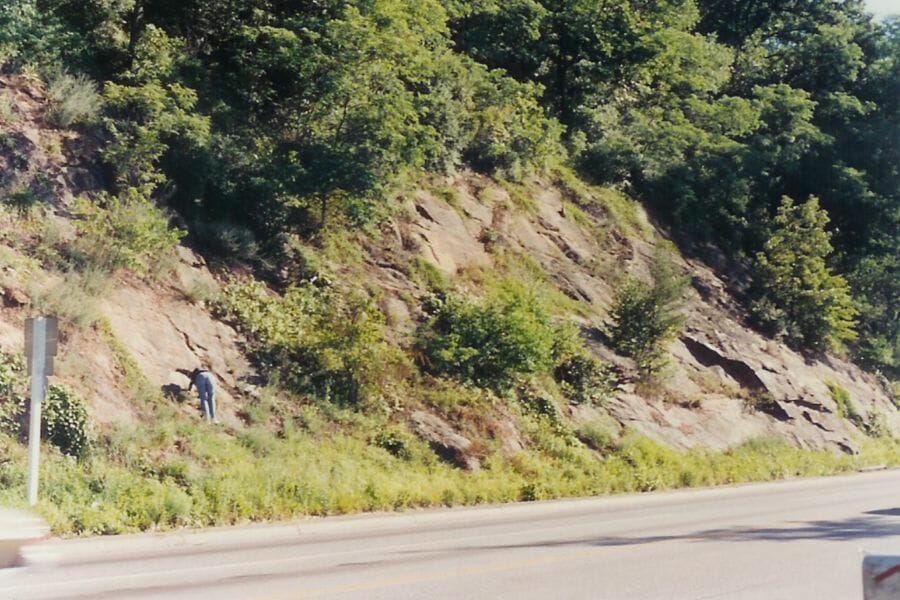
Blue Ridge Province, Carroll County
The Betty Baker Mine is a must-see if you’re wondering where to discover crystals in Virginia. This mine has a rich history, dating back to the 19th century, when it was originally used for copper mining. In the 1960s, a group of rockhounds discovered the mine’s hidden treasure trove of crystals, and it has been a popular spot for crystal hunting ever since. It’s also one of the best places to mine gems in Virginia.
The Betty Baker Mine is located in the foothills of the Blue Ridge Mountains, near the town of Amelia. Its unique geology, which includes a combination of volcanic and sedimentary rocks, makes it an ideal location for crystal formation. The mine’s owners are friendly and welcoming, and they provide all the tools and equipment you need to dig for crystals. Plus, the mine has a reputation for producing high-quality crystals,
Where we found crystals at the Betty Baker Mine
We had the most success searching for azurite, chalcopyrite, chrysocolla, galena, and pyrite crystals at Betty Baker Mine.
DON'T MISS OUT ON ANY GREAT FINDS!
While you're out searching for Crystals you're going to find A LOT of other interesting rocks and minerals along the way. The last thing you want to do is toss out something really interesting or valuable. It can be easy to misidentify things without a little guidance.
We've put together a fantastic field guide that makes identifying 140 of the most interesting and valuable rocks and minerals you will find REALLY EASY. It's simple to use, really durable, and will allow you to identify just about any rock and mineral you come across. Make sure you bring it along on your hunt!
Contrary Creek
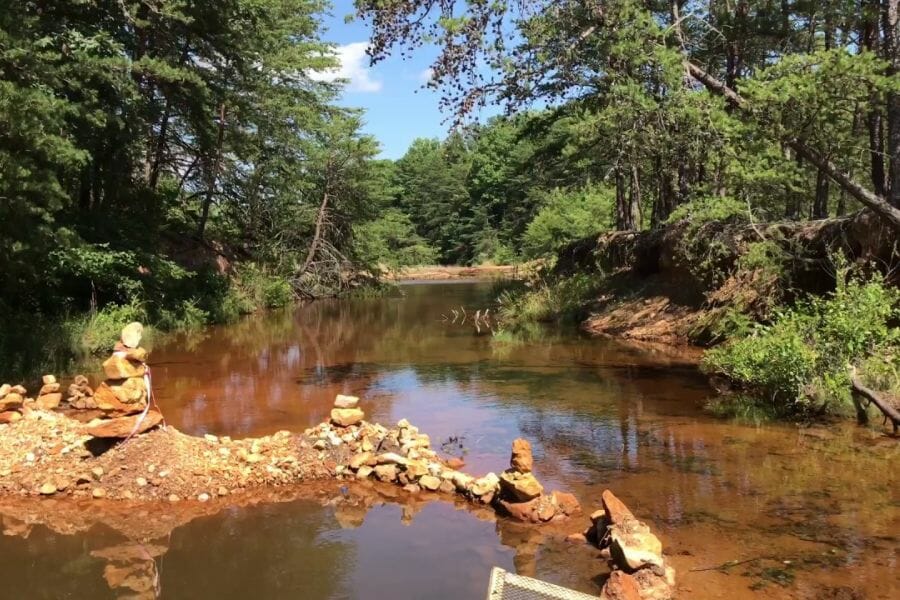
Louisa County, Virginia 23117
Contrary Creek was first discovered in the 1800s, and was mined for its copper and other minerals. However, it wasn’t until the 1960s that rockhounds discovered the creek’s rich crystal deposits. Today, Contrary Creek is a popular spot for crystal hunting, and attracts visitors from all over the country.
The creek is a little off the beaten path, so you won’t have to compete with as many other crystal hunters. Additionally, the creek’s unique geology makes it an ideal location for crystal formation. And with a little bit of luck and a lot of hard work, you just might uncover a real treasure.
Where we found crystals at Contrary Creek
There is an abundance of azurite, calcite, chalcopyrite, galena, garnet, kyanite, malachite, pyrite, quartz, and serpentine crystals upstream of Contrary Creek. We’ve created a detailed guide on how much are crystals worth for additional knowledge.
Hottinger Mine
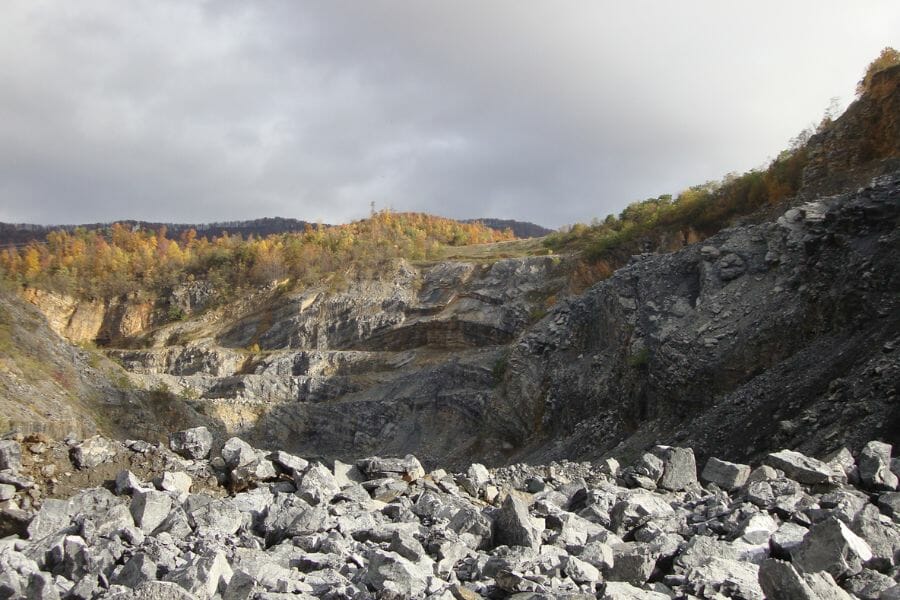
Otter Hill in Bedford County
The Hottinger Mine has been around since the early 1800s, when it was first used for lead and zinc mining. In the 1950s, however, it was discovered that the mine was also rich in quartz crystals, and it became a popular spot for hunters looking to score some amazing specimens.
Geographically, Hottinger Mine is situated in the rolling hills of the Appalachian Mountains, surrounded by lush forests and bubbling streams. The mine’s unique geology has made it a prime spot for crystal hunting, with a variety of quartz crystals and other minerals waiting to be unearthed. The mine’s mineral-rich soil and underground water sources create the perfect environment for crystal growth, resulting in an abundance of beautiful specimens.
Where we found crystals at Hottinger Mine
We mostly found amazonite, garnet, and smoky quartz crystals in the whole area of Hottinger Mine at Bedford.
Morefield Mine
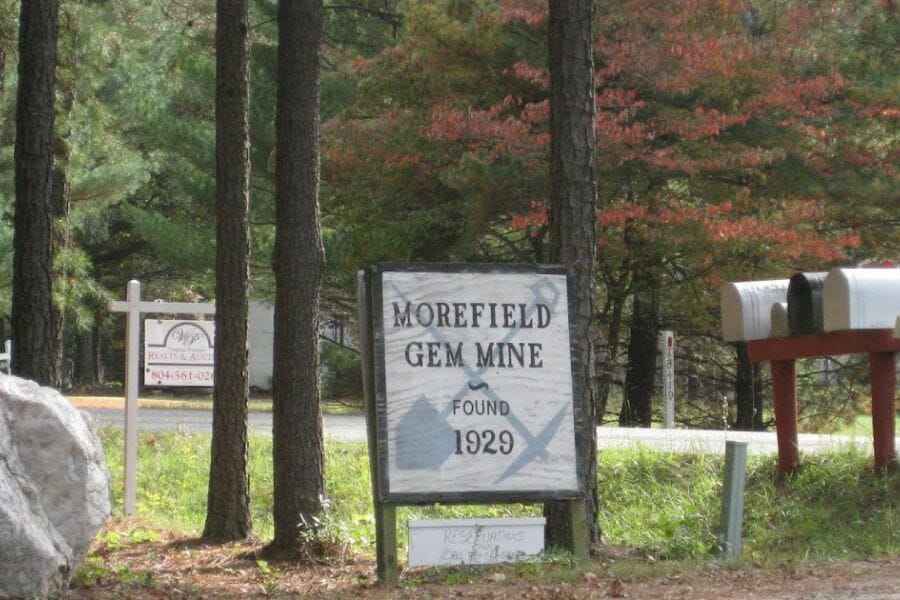
13400 Butlers Rd, Amelia Court House, VA 23002, United States
If you’re a crystal lover, you gotta check out Morefield Mine in Virginia! It’s been around since the 1920s, and it’s become a real hotspot for rockhounds and mineral collectors. This place has a rich history of mining, and it’s been churning out some serious crystal treasure for decades. It’s an absolute gem of a destination for anyone who loves digging for treasures.
Located in Amelia County, Morefield Mine is situated on ancient ocean floor land. That means there’s a lot of cool stuff to be found there and you won’t be disappointed! Whether you’re a beginner or an experienced collector, there’s something for everyone. The guided tours are great for people who want to get the most out of their experience and find some hidden gems.
Where we found crystals at Morefield Mine
Amazonite, amethyst, apatite, aquamarine, beryl, chalcopyrite, fluorite, galena, and quartz crystals are what we mostly found at the surrounding area of Morefield Mine at Amelia Court House.
Willis Mountain Mine
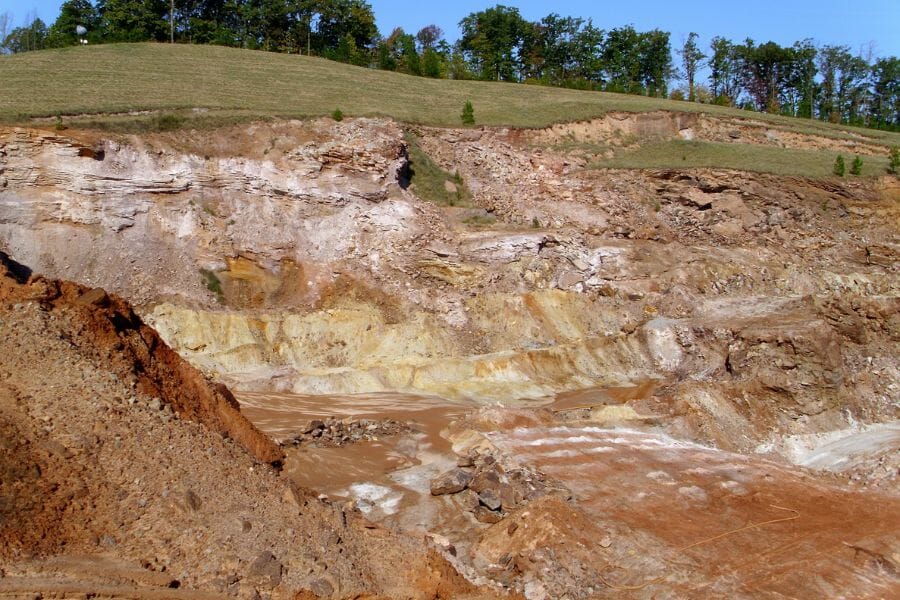
30 Willis Mountain Plant Ln, Dillwyn, VA 23936, United States
Willis Mountain Mine has been around since the late 1800s and has gone through several owners and periods of activity. These days, it’s run by a company called American Kyanite, and they offer tours and opportunities for crystal enthusiasts to come and dig for crystals.
Willis Mountain is made up of a type of rock called kyanite, which is known for its crystal-forming properties. The area around the mine is also rich in other minerals like mica and quartz, which can add some variety to your finds.
And if you’re looking to find some crystals, this is definitely the place to go. The mine has produced some absolutely stunning specimens over the years, including massive kyanite crystals that can be several feet long. Of course, there’s no guarantee you’ll strike it rich on your first visit, but that’s just part of the fun!
Where we found crystals at Willis Mountain Mine
We had the best luck locating apatite, garnet, hematite, kyanite, pyrite, and topaz crystals while going through the whole area of Willis Mountain Mine.
Our Other Favorite Places For Crystal Hunting
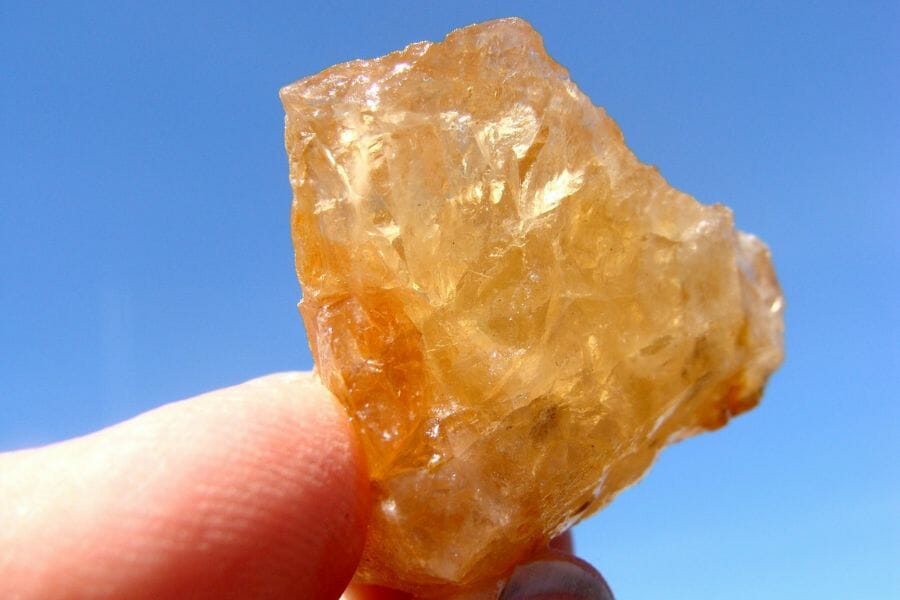
As we previously stated, the top five locations above are not the only ones where you can look for crystals in this area. We have an exceptionally wealthy state, therefore there are tons of different places where you can dig for crystals, as well as locate geodes in Virginia. Here are a few examples:
Where you can find crystals for free in Virginia
While many of the best areas to look for crystals in this state need payment before digging, there are other locations where you won’t need to spend any money looking for these marvels of nature.
| County | Location |
| Ablemarle | At the Charlottesville area, you can find epidotes and unakites at the Red Hill Quarry |
| Ablemarle | Buck Mountain Creek and Moorman River for agate, amethyst, epidote, and jasper |
| Amherst | Fancy Hill Ridge for amethyst and quartz |
| Grayson | In area cut banks, quarries, and gravels of Hanks Knob for garnet, pyrite, and quartz |
| Loudoun | Arlington Quarry for calcite, epidote, fluorite, and quartz |
Other great places to dig for crystals
We’ve also collected a list of some of the locations you may visit if you don’t mind paying to dig for magnificent crystals. Keep in mind that depending on the season, the prices may vary, so be sure to check it out first before going.
| County | Location |
| Ablemarle | Faber Mine for azurite, chalcopyrite, fluorite, and galena |
| Amelia | Rutherford Mine for amazonite, amethyst, muscovite, quartz, and topaz |
| Amelia | Richeson Mica Mine for amazonite and muscovite |
| Amelia | Jefferson, Berry, Winston, Pinchback, and Schlegal Mines for apatite, beryl, fluorite, muscovite, quartz, and tourmaline |
| Bedford | Bells Mine for amazonite, garnet, and smoky quartz |
| Franklin | Franklin Mine and between Chestnut and Snow Creeks for apatite, beryl, garnet, quartz, and tourmaline |
| Grayson | Hampton mine for garnet, kyanite, and tourmaline |
| Hanover | Mica Mine Farm for garnet, kyanite, and tourmaline |
| Henry | Ridgeway Mines for garnet and quartz |
| Prince Edward | Baker Mountain Kyanite Mine and Briery Mine for garnet, kyanite, and topaz |
| Prince William | Cabin Branch Mine for chalcopyrite, garnet, and galena |
| Rockingham | Nearby Lead-Zinc Mine for calcite, chalcopyrite, galena, hematite, pyrite, and tremolie/td> |
The Best Crystal Shops In Virginia
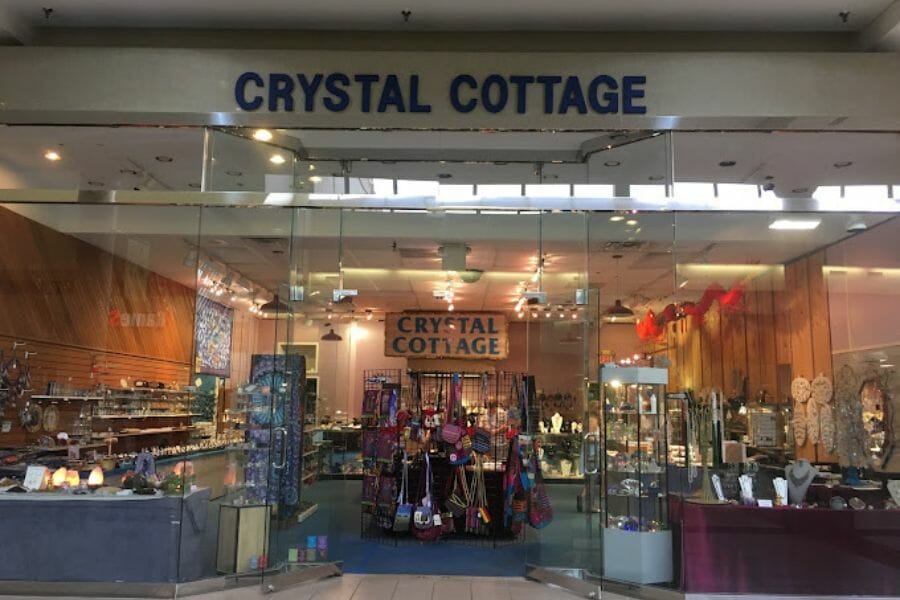
If you lack the time or the desire to embark on a crystal hunting adventure, you might want to think about purchasing crystals from some of Virginia’s best crystal shops. You can choose from various crystals at each of the shops we’ve listed below:
- The Crystal Case Rock Shop – The Barrett Street Antique Mall 2645 Dean Dr Dealer, 2645 Dean Dr # 901, Virginia Beach, VA 23452, United States
- Crystal Cottage – 4310 Electric Rd, Cave Spring, VA 24018, United States
- The Crystal Sunflower – 507 1/2 Botetourt St, Norfolk, VA 23510, United States
- Crystalis Treasures – 306 Elden St, Herndon, VA 20170, United States
- Healing Crystals – 4462 Martinsburg Pike, Clear Brook, VA 22624, United States
- Odyssey Gem and Float – 927 Valley Ave, Winchester, VA 22601, United States
- Rocks to Gems and Crystals – 5344 Mary Ball Rd, Lancaster, VA 22503, United States
- Sticks and Stones Circle – 11023 Lee Hwy, Fairfax, VA 22030, United States
- Stone Goddess Rock Shop – 206 Chesterfield Ave, Colonial Heights, VA 23834, United States
- VaRockShop – 190 Rockfish School Ln, Afton, VA 22920, United States
Additional places to find crystals in nearby states
If you’ve already tried all of our recommendations above or are planning a trip out of the state, you should check out our guides for neighboring states:
- Crystals in Kentucky
- Crystals in Maryland
- Crystals in North Carolina
- Crystals in Tennessee
- Crystals in West Virginia
If you have any recommendations we haven’t covered please leave them in the comments below!

